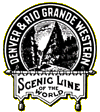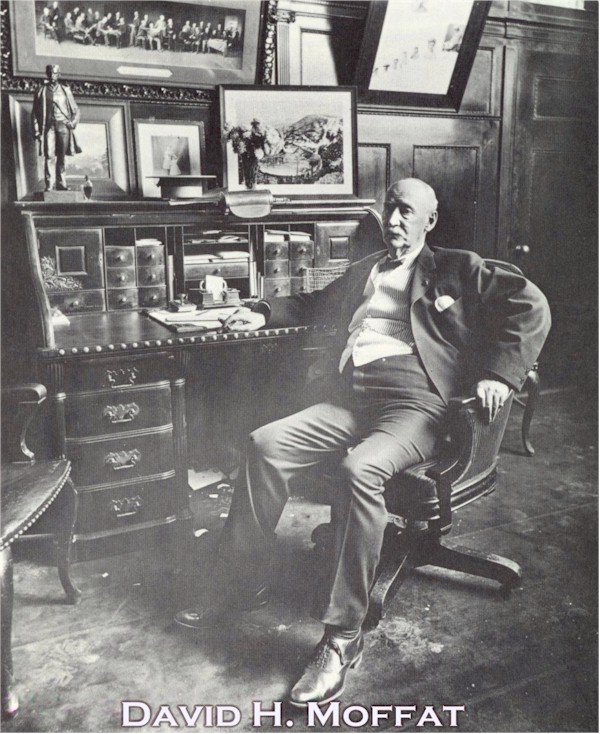

| Without a doubt, one of the great railfan sites in Colorado would be the Moffat Tunnel. It's six mile length through the continental divide bypassed 27 miles of difficult railroad, some above timberline over Corona Pass , also called Rollins Pass. The tunnel was named for David Moffat, one of Colorado's great historic figures. The elevation at Moffat is just over 9,000 feet, so conditions are mountain-like, the same as much of Colorado. Prior to the tunnel's construction, trains had a 27 mile route over that 12000 foot pass. |

|
| This is a picture of David Moffat, taken by historic photographer L. C McClure. Moffat was involved in an armed robbery in downtown Denver just prior to this picture being taken. His small Moffat Road station can still be seen just north of 15th Street and just west of the Post Office Terminal annex. The big money roads forced him to use his own station in early years, rather than the large Union Station that now stands at 17th and Wynkoop in Denver. In later years, Moffat's trains were allowed to use Union Station, but continued to use the outside tracks, furthest away from the station. In the late 1930's, Moffat's Denver and Salt Lake railroad was merged into the Denver and Rio Grande Western when the Dotsero Cutoff was built, connecting Denver with Grand Junction, Salt Lake City and points west. In the picture above, on the wall a picture can be seen of Yankee Doodle Lake, a scenic loop on the Rollins Pass route. |

|
This information comes from the Ski Train route flyer about the route and the
Tunnel:
|